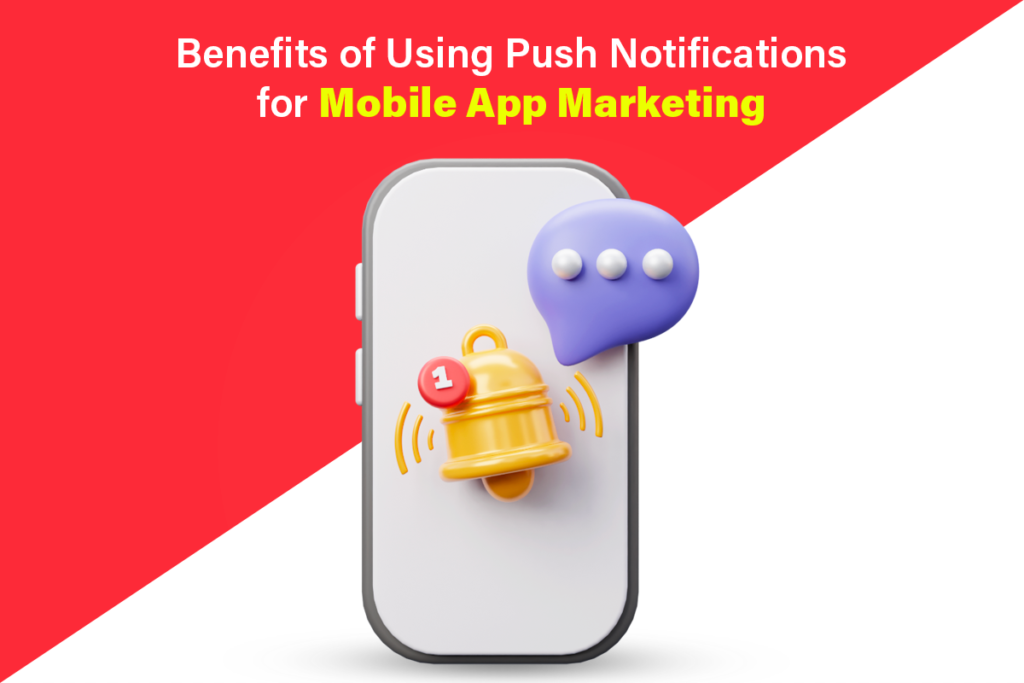
Benefits of Using Push Notifications for Mobile App Marketing
Push notifications have become an essential tool for mobile app marketing. Push notifications are alerts that are sent directly to a user’s mobile device, even if they are not actively using the app. These notifications can be used to promote new features, products, or content, as well as to encourage users to re-engage with an app they may have abandoned.
Here are some of the top benefits of using push notifications for mobile app marketing:
Increased Engagement
Push notifications are a powerful way to increase engagement with your app. By sending notifications directly to a user’s device, you can prompt them to take a specific action or remind them of features or content they may have forgotten about. This can help keep your app top-of-mind and increase the likelihood that users will return to your app in the future.
Improved Retention
Push notifications can also help improve user retention. By sending timely and relevant notifications, you can remind users of the value your app provides and encourage them to continue using it. This can be particularly effective for apps that are used infrequently, such as fitness or productivity apps, as push notifications can help keep users motivated and on track.
Personalization
Push notifications can be personalized based on user behavior, preferences, and location. This allows you to send more targeted and relevant messages, increasing the likelihood that users will engage with your app. For example, you can send notifications to users who have recently viewed a specific product or category within your app, or send location-based notifications to users who are in close proximity to your physical store.
Increased Revenue
Push notifications can also help increase revenue for your app. By promoting new products, features, or content through push notifications, you can encourage users to make in-app purchases or upgrade to premium features. You can also use push notifications to promote sales or special offers, which can drive increased revenue for your app.
Improved Customer Service
Push notifications can be used to improve customer service by providing timely and relevant information to users. For example, you can send notifications to users about changes to their account, updates on support tickets, or alerts about potential security breaches. This can help improve the overall user experience and increase trust in your app.
Increased User Feedback
Push notifications can also be used to encourage users to provide feedback on your app. By sending notifications asking for feedback, you can gather valuable insights into how users use their app and identify areas for improvement. This can help you make data-driven decisions about how to improve your app and increase user satisfaction.
Greater Brand Awareness
Finally, push notifications can help increase brand awareness by keeping your app top-of-mind and reminding users of the value you provide. By sending notifications with your logo or branding, you can increase recognition and recall for your app, which can be particularly important for apps in crowded or competitive markets.
However, it’s important to note that push notifications can also be a double-edged sword. If not used properly, they can annoy users and even lead to them uninstalling your app. Here are some best practices to keep in mind when using push notifications:
- Timing is key. Avoid sending notifications at inconvenient times, such as late at night or early in the morning.
- Be relevant. Make sure your notifications are timely and personalized, and provide value to the user.
- Limit frequency. Don’t bombard users with too many notifications, as this can be overwhelming and lead to user fatigue.
- Provide an opt-out option. Allow users to easily opt out of push notifications if they find them irrelevant or annoying.
- Test and iterate. Continuously monitor user engagement and feedback, and adjust your push notification strategy accordingly.
By following these best practices, you can ensure that your push notifications are effective, relevant, and well-received by your users.
In addition to these best practices, it’s also important to segment your user base and tailor your push notifications accordingly. Different users may have different interests, behaviors, and preferences, so sending the same generic message to everyone may not be effective. By segmenting your user base based on factors such as demographics, location, behavior, and preferences, you can send more targeted and relevant messages that are more likely to resonate with each user.
Another important consideration is the use of rich media in your push notifications. With the increasing capabilities of mobile devices, push notifications can now include images, videos, and interactive elements. By incorporating rich media in your notifications, you can create more engaging and interactive messages that are more likely to grab the user’s attention and encourage them to take action.
For example, you could include an image of a new product or a video demonstrating a new feature in your app. You could also include interactive elements such as buttons that allow users to quickly take action, such as making a purchase or booking a reservation.
Conclusion
Overall, push notifications are a powerful and versatile tool for mobile app marketing that can help increase engagement, retention, revenue, customer service, feedback, and brand awareness. By using push notifications responsibly and effectively, and tailoring your messages to each user segment, you can create a more personalized and engaging user experience that drives growth and success for your mobile app.
Please feel free to Contact Us in case you need any guidance regarding your app marketing needs.




0